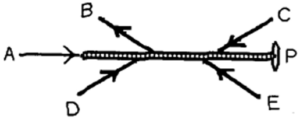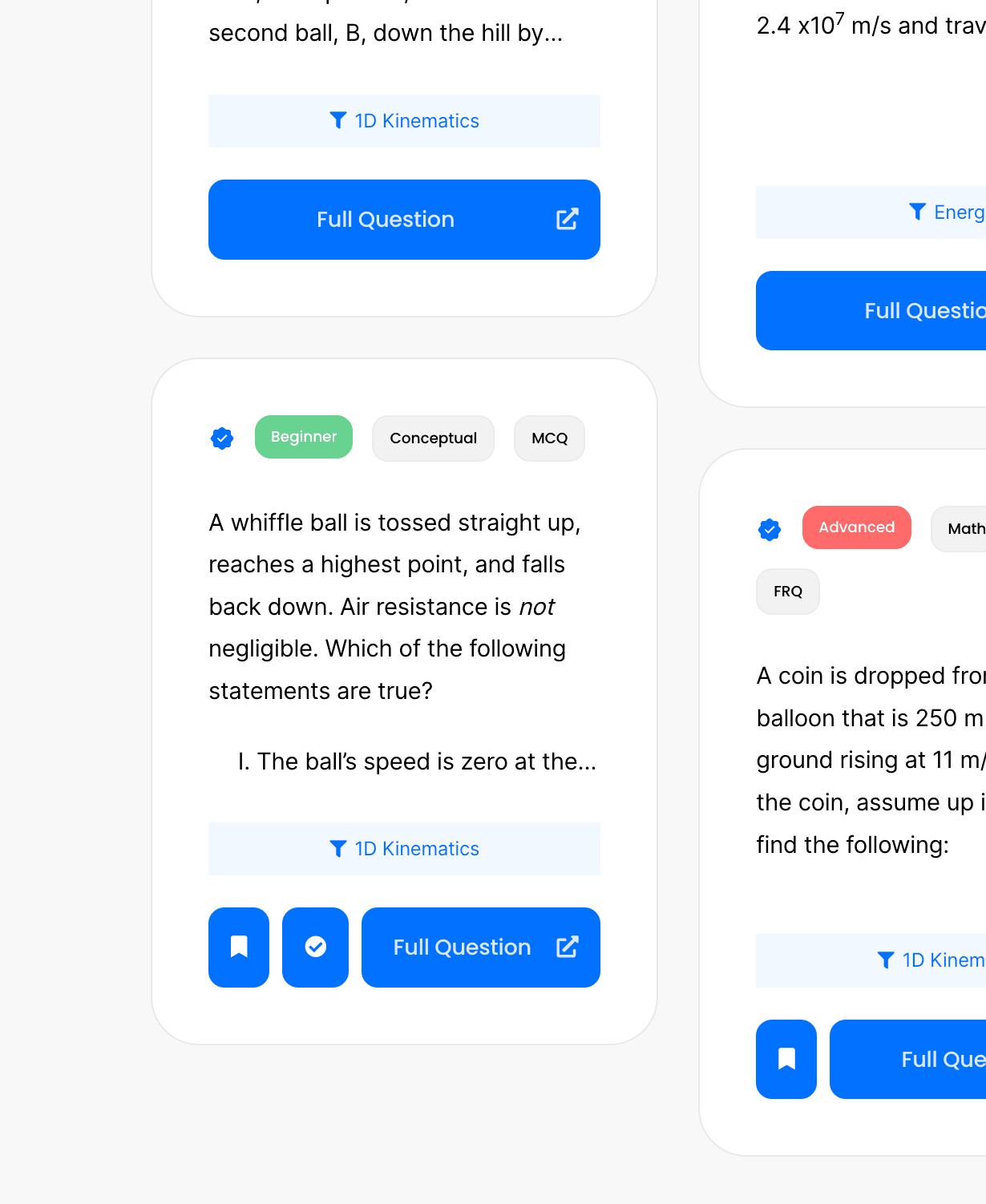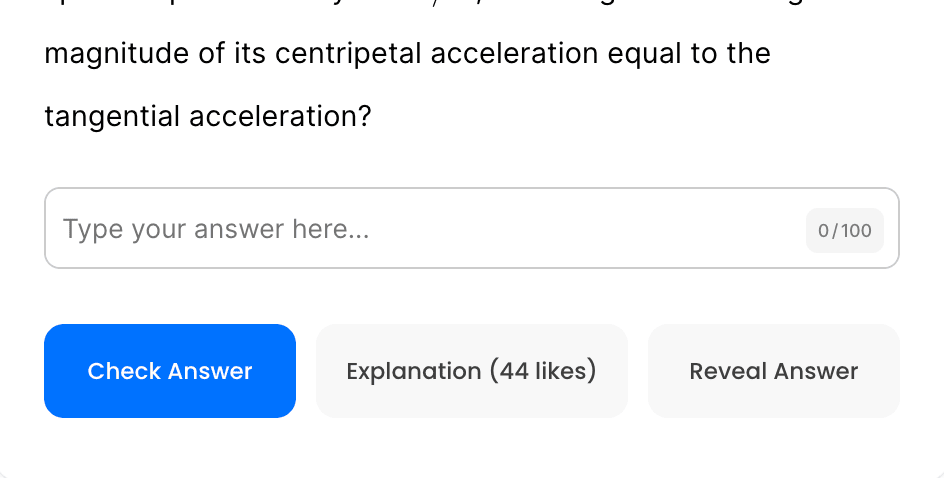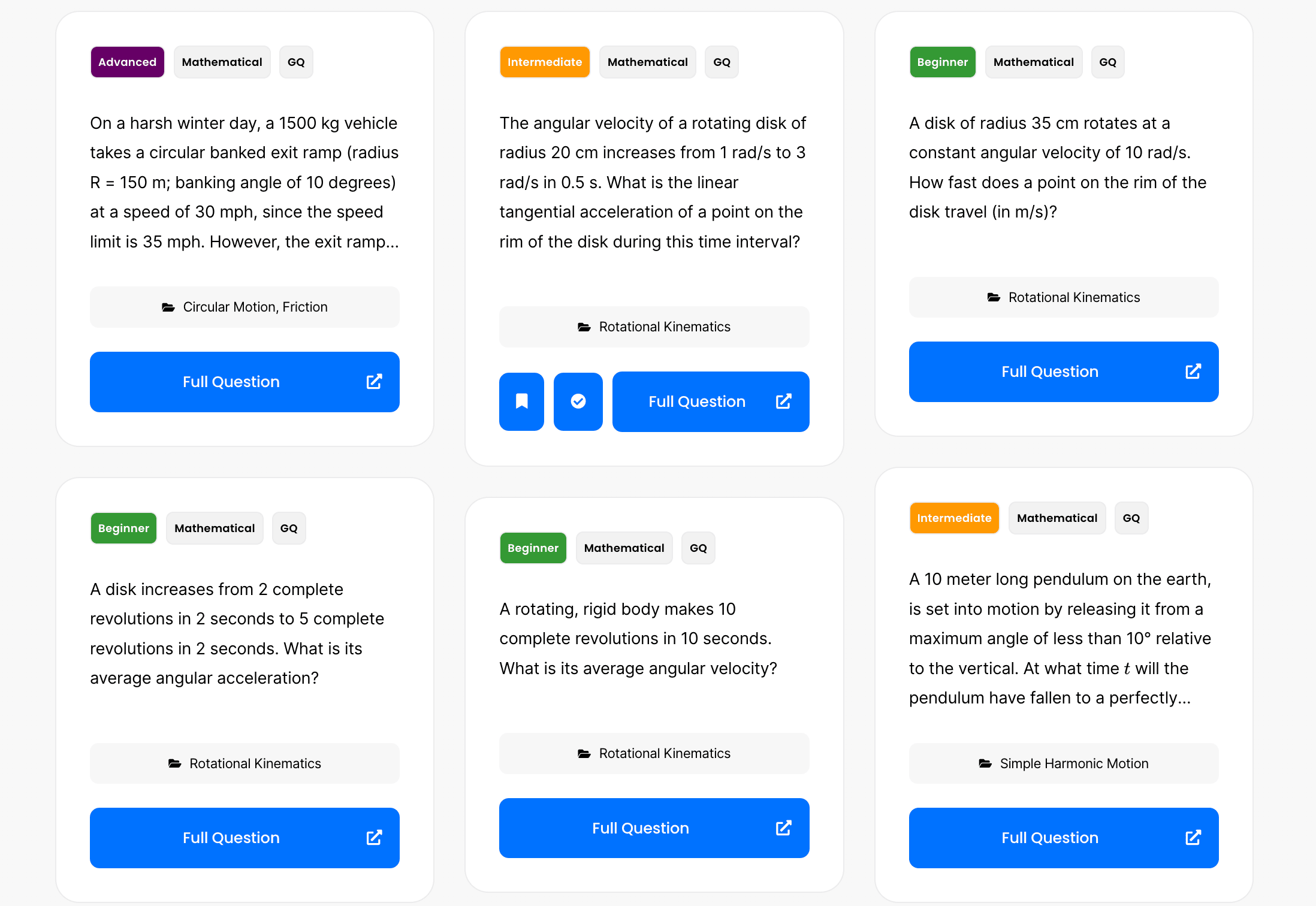The driver of a car traveling at \( 30.0 \) \( \text{m/s} \) applies the brakes and undergoes a constant negative acceleration of \( 2.00 \) \( \text{m/s}^2 \). How many revolutions does each tire make before the car comes to a stop, assuming that the car does not skid and that the tires have radii of \( 0.300 \) \( \text{m} \)?
A high-speed drill rotating counterclockwise at \( 2400 \) \( \text{rpm} \) comes to a halt in \( 2.5 \) \( \text{s} \).
Runner A begins a \( 100 \)-meter race at time \( t = 0 \) and runs at a constant speed of \( 6.0 \) \( \text{m/s} \). Runner B starts the same race \( 3 \) seconds later but runs at \( 9.0 \) \( \text{m/s} \).
A particle moves along the x-axis with an acceleration of \( a = 18t \), where \( a \) has units of \( \text{m/s}^2 \). If the particle at time \( t = 0 \) is at the origin with a velocity of \( -12 \, \text{m/s} \), what is its position at \( t = 4.0 \, \text{s} \)? Note this requires calculus to solve.
Two identical blocks are connected to the opposite ends of a compressed spring. The blocks initially slide together on a frictionless surface with velocity \( v \) to the right. The spring is then released by remote control. At some later instant, the left block is moving at \( \frac{v}{2} \) to the left, and the other block is moving to the right. What is the speed of the center of mass of the system at that instant?
A car rounds a curve at a steady \( 50 \) \( \text{km/h} \). If it rounds the same curve at a steady \( 70 \) \( \text{km/h} \), will its acceleration be any different?
An object is thrown straight upward at 64 m/s.
Why does a child in a wagon seem to fall backward when you give the wagon a sharp pull forward?
A block of mass \( m \), acted on by a force \( F \) directed horizontally, slides up an inclined plane that makes an angle \( \theta \) with the horizontal. The coefficient of sliding friction between the block and the plane is \( \mu \).
You stand at the edge of a vertical cliff and throws a stone vertically upwards. The stone leaves your hand with a speed v = 8.0 m/s. The time between the stone leaving your hand and hitting the sea is 3.0 s. Assume air resistance is negligible. Calculate:

A ball of mass \(m\) is released from rest at a distance \(h\) above a frictionless plane inclined at an angle of \(45^\circ\) to the horizontal as shown above. The ball bounces horizontally off the plane at point \(P_1\) with the same speed with which it struck the plane and strikes the plane again at point \(P_2\). In terms of \(g\) and \(h\), determine each of the following quantities:
 Five forces act on a rod that is free to pivot at point P, as shown in the figure. Which of these forces is producing a counter-clockwise torque about point P?
Five forces act on a rod that is free to pivot at point P, as shown in the figure. Which of these forces is producing a counter-clockwise torque about point P?
By continuing you (1) agree to our Terms of Use and Terms of Sale and (2) consent to sharing your IP and browser information used by this site’s security protocols as outlined in our Privacy Policy.
Quick Start Guide
AP physics 1, AP C, honors and advanced physics students.
Quickly filter questions by units and more.


Here’s guide to using 5 UBQ filters.
GQ = general question, MCQ = multiple choice, FRQ = free response.


Click the check or bookmark button.
Now you’ll be able to see completed or bookmarked questions at a glance!
Answer keys, personalized for you.

Phy will be responsible for grading your FRQs and GQs.
No more copy and pasting. Just solve and snap.
Questions for Mastery

By continuing you agree to nerd-notes.com Terms of Service, Privacy Policy, and our usage of user data.